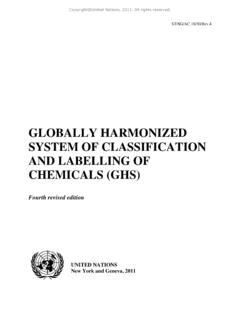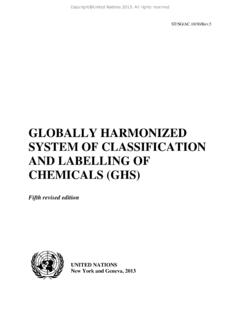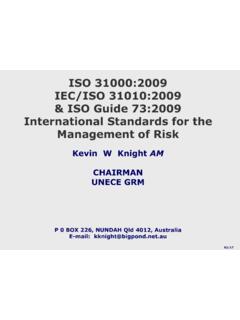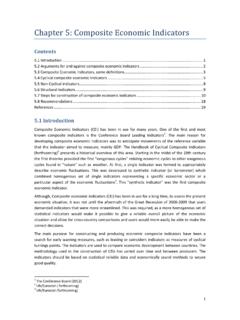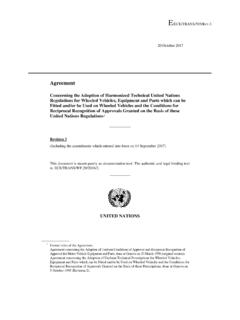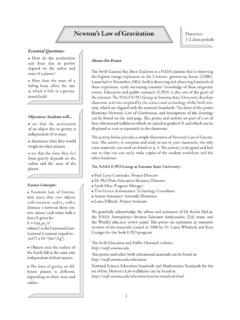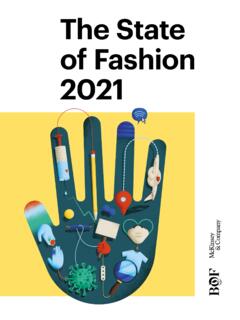Transcription of Fashion and the SDGs: what role for the UN?
1 Fashion and the SDGs: what role for the UN? Geneva, 1st of March, 2018. International Conference Center Geneva, ROOM 2. The Fashion industry in numbers The Fashion or apparel industry has an often underestimated impact on the dev elopment of our planet . This $ trillion-dollar industry is the second highest user of w ater w orldwide, producing 20 percent of global w ater w aste. The production of one cotton shirt requires 2700. Litres the amount a person drinks in years. 10 percent of the global carbon emissions are emitted by the apparel industry and cotton farming is responsible for 24 percent of insecticides and 11 percent of pesticides despite using only 3 percent of the w orld's arable land.
2 As far as w aste is concerned, 85 percent of textiles are sent to landfills, 21 billion tons a year. Beyond the env ironmental impact, the Fashion industry is closely linked to labour, gender and pov erty issues. 1 in 6 people in the w orld w orks in a Fashion related job, and 80. percent of the labour force throughout the supply chain are w omen. While the impact of the Fashion industry is already significant today, it is likely to increase even further in the upcoming decades. The av erage consumer is now purchasing 60 percent more items of clothing compared to 2000, but each garment is kept half as long and on av erage 40 percent of clothes in our w ardrobes are never worn.
3 By 2030, there w ill be billion people in the global middle class, up from 3 billion in 2015. This w ill lead to an increased demand for clothes and other goods that define middle-income lifestyles. If consumption continues at its current rate, there will be three times as many natural resources needed by 2050 compared to w hat w as used in 2000. The link to the SDGs Hav ing these numbers in mind, it becomes clear that the dev elopment of the Fashion industry has a significant impact on the achiev ement of the UN Sustainable Dev elopment Goals (SDGs).
4 SDG 12 in particular commits to ensuring sustainable consumption and production patterns and is structured ov er eight targets, addressing the use of natural resources, chemical w aste, fossil fuels and the integration of sustainable practices into the production cycles all of w hich apply to the Fashion industry. How ever, it is not only producers who can make a difference. Target eight under this goal addresses the consumer's right to be informed so as to be better aw are of sustainable dev elopment issues . an area almost untouched by the Fashion industry.
5 I mproving the w orking conditions of Fashion w orkers' is an important starting point for the achiev ement of SDG 8 to promote inclusiv e and sustainable economic grow th, full and productiv e employment and decent w ork for all. With respect to the env ironmental dimension, numerous targets under various SDGs are directly affected by the apparel industry: SDG 6 relates to w ater pollution, the release of hazardous chemicals and materials, treatment of w astewater and w ater-use efficiency. SDG 13 stresses to take urgent action to combat climate change and its impacts'.
6 With textile production generating more greenhouse gas emission than all international flights and maritime shipping combined, the Fashion industry is a key sector for this SDG. SDG 14 addresses the issue of marine pollution such as microfibers and microplastics released into the oceans from cloth w ashing. Furthermore, cotton production across the globe sev erely degrades soil quality, w hich calls for restoration as committed to by target three under SDG 15. The social dimension of the Fashion industry is directly linked to SDG 5 on gender equality, but also SDG 1 on eradicating pov erty is influenced for instance by the salaries paid to millions of people w orking in the apparel industry in dev eloping countries.
7 Further linkages between the Fashion industry and the SDGs can be draw n by looking at the health impacts of chemicals used in the production process on w orkers as w ell as communities affected by env ironmental pollution (SDG 3 on good health and w ell-being) or by looking at the recycling of clothing (target six on w aste management under SDG 11 on Sustainable Cities and Communities). In short, the majority of the SDGs are directly linked to the Fashion industry. What the UN is doing Within the UN system, sev eral organizations hav e addressed certain aspects of the Fashion industry.
8 For instance, the I nternational Trade Centre (ITC) founded the Ethical Fashion I nitiative in 2009, w hich connects marginalised artisans from the dev eloping w orld the majority of them w omen to international Fashion houses for mutual benefit. Furthermore, I TC's Clothing and Textiles Sector prov ides assistance to dev eloping countries' small and medium enterprises to compete in changing and challenging markets. UN Environment addresses the Fashion industry in the areas of Sustainable Consumption and Production, sound chemicals management, sustainable lifestyles and circular economy (w hich cover a range of sectors).
9 The I nternational Labour Organisation (ILO) adv ocates and activ ely works on improv ing w orking conditions in the textiles, clothing, leather, and footw ear sector. The UN Global Compact launched in 2012 the first industry-specific sustainability initiativ e for Fashion by collaborating w ith the Nordic Fashion Association, w ho published a Code of Conduct for the Fashion industry. They are now w orking w ith apparel companies on w ater, supply chain and health issues, among others. The UN Economic Commission for Europe (UNECE) organised, in cooperation w ith FAO, on the occasion of the 2014 I nternational Day of Forests, a w ell-attended panel discussion and Fashion show that highlighted the importance of forest products for the sustainability of the sector.
10 Discussions w ere supported by an expert study on the sustainability of forest fibers. In addition, the United Nations Centre for Trade Facilitation and Electronic Business has produced background papers and ev ents on the topic of transparency and traceability in the textile sector. With respect to human rights, the UN Human Rights Council endorsed in 2011 the UN Guiding Principles on Business and Human Rights a set of guidelines to prevent, address and remedy human rights abuses committed in business operations w hich addresses all States and companies, thus including the apparel industry.


